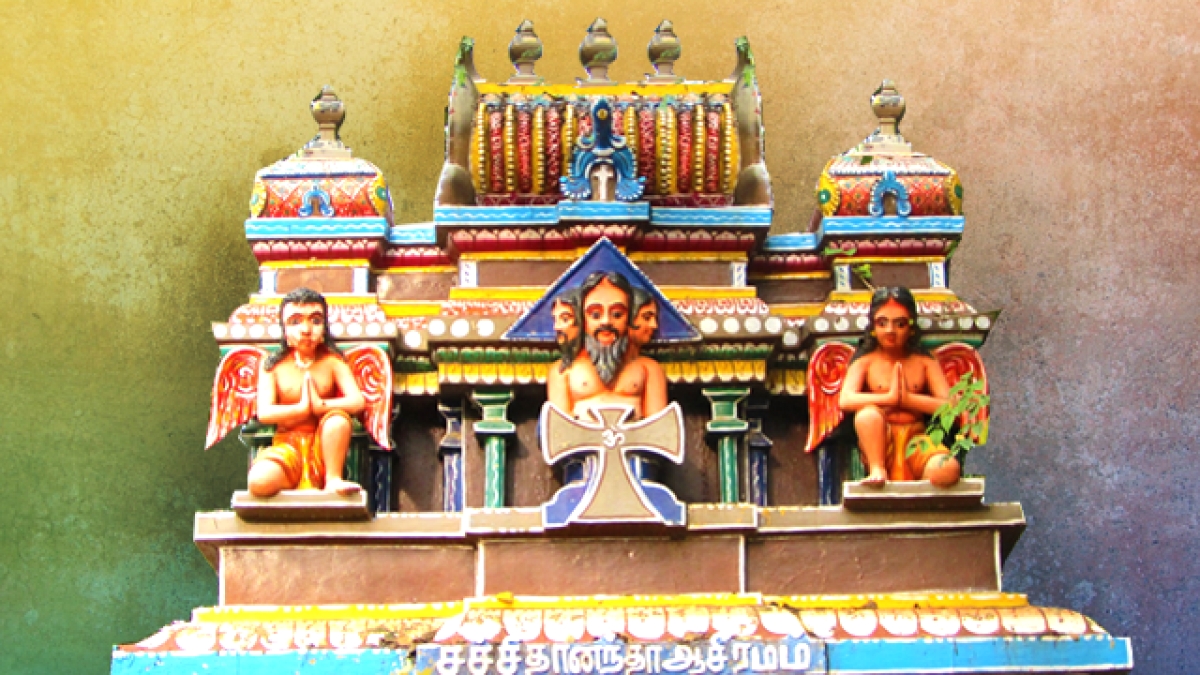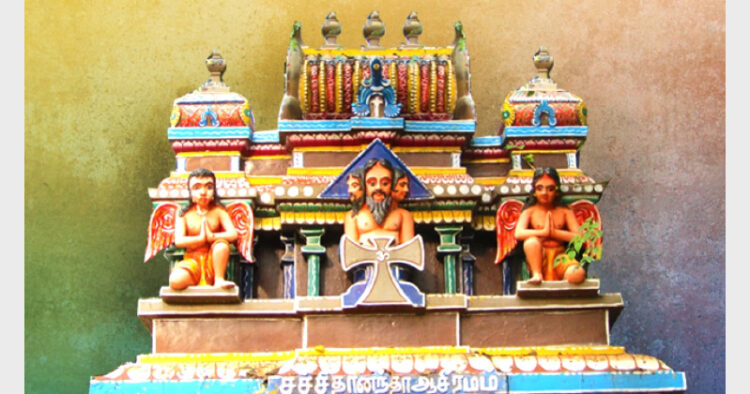
Kapil Mishra
For the past few weeks on social media, Mission Kaali (which this writer works closely with) has been showing examples of past cultural appropriation of pre-Christian religions, cultural icons, deities and mythology by the early Christians. Examples include the copying of the story of Horus curing blindness by spitting in the person’s eye and rubbing it, the copying of the death of Socrates by Luke in his gospel to depict Jesus in a stoic manner, and the famous icon of Madonna And Child being borrowed from the existing Horus and Isis. Egyptian, Persian and Greco-Roman civilisation have been appropriated into the Christian fold. Why do I bring up these examples? And now they do the same Sanatan Dharma.
There are many examples of Jesus in India being depicted like Shri Krishna. Jesus appears with vibhuti to look like Kartikeya Murugan. Priests in India where saffron robes instead of white. Christians passing themselves as Sabarimala devotees by dressing like them. Instead of Venkatesh Suprabhatam, they now have Yesu Suprabhatam. There is even academic study by people like J. Baskar Doss attempting to revise the history of our Vedas, Upanishads, Itihaas and Sutras to say that they were actually influenced by Christian theology and Christian thought. All the more reason we need a Dharma Intellectual Property (IP) Law.
The hashtag #DharmaIPLaw has been trending for the past few weeks, thanks to the efforts of many organizations (including Mission Kaali) and individuals on social media. Many of you have even asked what would a Dharma IP Law look like. I will show two examples of religious or cultural intellectual property laws in order to establish how it could be stipulated in a Dharma IP Law.
How the indigenous people of America protect their cultural intellectual property
The history of subjugation of the indigenous people of North America remains a constant on-going problem even though there have been measly attempts on the part of the United States of America (USA) and Canadian governments to allow self-rule by the various indigenous tribes. However, when it comes to cultural artefacts, cultural and religious practices, and even symbols, the indigenous tribes have few options at their disposal to protect their cultural IP. However, some tribes take advantage of what laws they can to protect their culture. For example, the Navajo Nation in southwestern USA has registered the name “Navajo” as a trademark, in relation to their artefacts, clothing style, and jewellery style. In 2013, the fashion company Urban Outfitters was sued by the Navajo Nation for unauthorized use of the trademark “Navajo” in describing clothing and jewellery that imitated the Navajo style. In 2016, the Navajo Nation settled with Urban Outfitters, which set the precedent of companies having to ask for permission to use a trademark. At least from the Navajo Nation.
Another southwestern USA indigenous tribe, the Zia Pueblo, attempted to fight the registration of businesses that appropriated their symbol with mixed success. Although they successfully stopped business with the Zia Pueblo sun symbol from registering, they haven’t commanded the same respect that the Navajo Nation has and will have to remain vigilant of future appropriations of their symbol.
How could this be practised with regard to Dharma IP?
For starters, let us take the use of saffron robes by some Christian priests or pastors (see example in the above paragraph). Saffron is an important colour that is part of the ethos of Sanatan Dharma. It is worn by sanyasis and pujaris and it commands the respect of ordinary Hindus. So to see it appropriated by a Christian priest, pastor or missionary (or even a lay Christian) is disconcerting. It’s like seeing your culture being stolen before your eyes. Perhaps the term saffron should be registered as a trademark. Or linked to a larger trademark, such as “Hinduism”, “Hindu”, “Dharmic” etc. Part of trademark law in many countries involves meting out fines to violators who violate these laws. Individuals and organizations would need to be fined in the same way if they are caught wearing saffron robes instead of white robes.
Another example would be registering the term “Bharatnatyam”. Over the years, Bharatnatyam has been appropriated by Christians as their own or de-Hinduised. A relationship between Hinduism and Bharatnatyam needs to be made clear when registering a trademark. Or as with the saffron robes, it can be linked to a larger trademark. Yoga could also be registered in a similar fashion, either as a separate trademark that establishes the clear relationship between Hinduism and Yoga or under the larger “Hindu”, “Hinduism” or “Dharmic” trademark. Existing laws for trademark can be used, but a larger Dharma IP Law can create these trademarks along with the addressing of other aspects of Dharma IP.
Malaysia does not allow the name of the Islamic deity (Allah) by other religions
In 2007, the Malaysian Home Minister threatened to revoke the publishing license of the Herald, a newspaper run by the Catholic Church. The reason being their misuse of the word “Allah” by Catholics to refer to their god “Yahweh”. The Herald appealed that decision up to the Malaysian supreme court which upheld the position held by the Home Minister. The decision was welcomed by the Muslim community. The Herald and their parent organization tried to make the case that the word “Allah” means “God” to them. As in, the one true god which all Abrahamic religions hold as the ONLY god. Clearly, the majority Islamic government did not think so.
How can we draw from this example from Malaysia?
A clause in a Dharma IP Law must stipulate that “Parmeshwar” is not to be used by Christians, as “Parmeshwar” refers to Lord Shiva. Quite simply “Parmeshwar” does not equal “Yahweh”. This writer has also heard other Christians refer to the Christian god “Yahweh” as “Allah” or “Khuda”. That too should not be allowed, but that would have to be addressed separately. In fact, Christians should consider using their own non-translatable words for their religion. For example, “Yahweh” or “Jehovah” should be used for their deity, in all the bibles they publish in all languages. Jesus is referred to as “Yesu” or “Yeshu Masih”, so there is another example of a non-translatable. Some Christians also use the word “Veda” to refer to their holy book the bible. That is another word that should be allowed to be used by Christians; “bible” can be used instead.
Summary
In summary, it is necessary to distinguish words, customs, aagamas, symbols and practices as Hindu. Otherwise, there is a grave danger of being digested (this concept was first described by Shri Rajiv Malhotra) into the Christian fold. All of our traditions have a deeper meaning, and should not be frivolously be ceded to the Christians. They appropriate dharmic traditions in order to first ingratiate themselves with the larger Hindu society and then to claim Hindu culture as their own while erasing the very same identity that makes us unique in the world. Do not be flattered that Christians light diyas that look like ours but have a cross on it. Do not be flattered when Christians practice Bharatnatyam but bow to Jesus instead of Nataraja. Do not be flattered when Jesus has a tilak painted on him or holds a trishul. This is cultural appropriation of the worst kind, and needs to be stopped. Demand from your Lok Sabha MPs a Dharma IP Bill to be passed into law to stop this rampant appropriation of Christians of our Dharma.














Comments